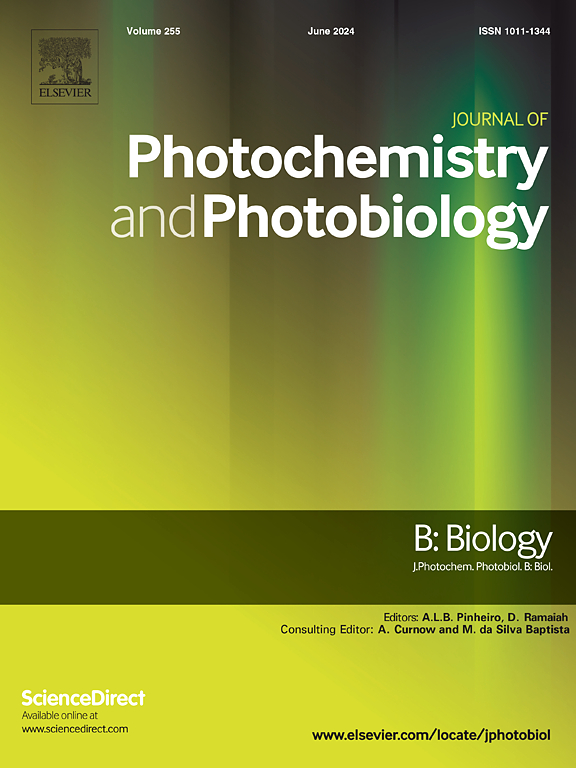纳米金刚石介导的药物传递和上转化光疗联合用于增强肝癌治疗
IF 3.7
2区 生物学
Q2 BIOCHEMISTRY & MOLECULAR BIOLOGY
Journal of photochemistry and photobiology. B, Biology
Pub Date : 2025-09-05
DOI:10.1016/j.jphotobiol.2025.113260
引用次数: 0
摘要
为了减轻传统治疗方法的显著副作用和有限的疗效,我们提出了一种新的策略,包括使用纳米金刚石(ND)药物负载结合上转换蓝光照射,以实现高效的化疗光动力治疗肝肿瘤细胞,特别是HepG2细胞系。nd负载药物向HepG2细胞递送高浓度的阿霉素,增强化疗效果。在近红外照射下,蓝光被上转换纳米粒子(UCNPs)激发,从而激活活性氧的产生,表明化疗和光动力双模式治疗显着提高了抗癌效果。体外和体内对HepG2细胞的抑制率分别为77.4%和88.1%,明显高于单次光动力治疗组(分别为18.9%和28.6%)和载药治疗组(分别为62.6%和71.4%)。在处理条件下,小鼠的心、肝、脾、肺、肾等组织均未出现明显的组织损伤和炎症反应,说明UCNPs和NDs具有良好的生物相容性,对正常细胞和组织的毒性较小,有利于临床应用。本文章由计算机程序翻译,如有差异,请以英文原文为准。
Combined nanodiamond-mediated drug delivery and upconversion phototherapy for enhanced liver cancer treatment
To mitigate the significant side effects and limited efficacy of traditional treatment methods, we propose a novel strategy that involves the use of nanodiamond (ND) drug loading combined with up-converted blue light irradiation to achieve highly efficient chemotherapy-photodynamic treatment of liver tumor cells, specifically for the HepG2 cell line. ND-loaded drugs delivered a high concentration of doxorubicin to HepG2 cells, enhancing the chemotherapy effect. Upon exposure to near-infrared irradiation, blue light is excited by up-conversion nanoparticles (UCNPs), thereby activating the production of reactive oxygen demonstrated that the dual-mode therapy of chemotherapy and photodynamic therapy showed significantly improved anticancer effects. The inhibition rates were 77.4 % in vitro and 88.1 % in vivo for HepG2 cells, which are significantly higher than those treated with single photodynamic therapy (18.9 %, 28.6 %) or drug-loaded therapy (62.6 %, 71.4 %). It is noted that under the treatment conditions, no obvious tissue injury or inflammation was observed in the heart, liver, spleen, lung, and kidney samples collected from mice, indicating that the UCNPs and NDs exhibit good biocompatibility and are less toxic to normal cells and tissues, which would be favorable for clinical applications.
求助全文
通过发布文献求助,成功后即可免费获取论文全文。
去求助
来源期刊
CiteScore
12.10
自引率
1.90%
发文量
161
审稿时长
37 days
期刊介绍:
The Journal of Photochemistry and Photobiology B: Biology provides a forum for the publication of papers relating to the various aspects of photobiology, as well as a means for communication in this multidisciplinary field.
The scope includes:
- Bioluminescence
- Chronobiology
- DNA repair
- Environmental photobiology
- Nanotechnology in photobiology
- Photocarcinogenesis
- Photochemistry of biomolecules
- Photodynamic therapy
- Photomedicine
- Photomorphogenesis
- Photomovement
- Photoreception
- Photosensitization
- Photosynthesis
- Phototechnology
- Spectroscopy of biological systems
- UV and visible radiation effects and vision.

 求助内容:
求助内容: 应助结果提醒方式:
应助结果提醒方式:


